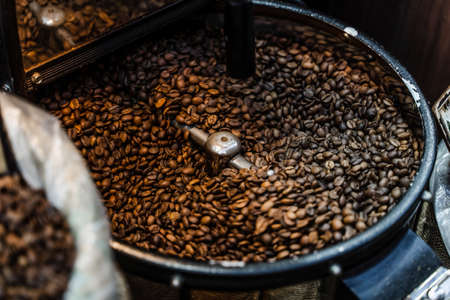Introduction to Brazilian Coffee
When it comes to coffee, Brazil is a name that stands out around the world. As the largest producer and exporter of coffee globally, Brazil has played a major role in shaping the way people experience and enjoy their daily cup—especially in the United States. From the bustling cafes of New York City to small-town diners in the Midwest, chances are the coffee being poured includes beans that originated in Brazil.
A Brief History of Brazilian Coffee
Coffee was first introduced to Brazil in the early 18th century, and it didn’t take long for it to become one of the country’s most important crops. By the mid-1800s, Brazil had already become a top global coffee supplier. Thanks to its vast land area, ideal climate, and rich soil, Brazil was able to scale production rapidly while maintaining quality. Today, coffee farming is deeply woven into the fabric of Brazilian culture and economy.
Brazil’s Impact on Global Coffee Production
Brazil produces around one-third of all coffee consumed worldwide. The country is known for its large plantations, advanced harvesting techniques, and consistent quality. Here’s a quick look at how Brazil compares with other top coffee-producing countries:
| Country | Annual Production (in million 60kg bags) | Main Coffee Type |
|---|---|---|
| Brazil | 60+ | Arabica & Robusta |
| Vietnam | 30+ | Robusta |
| Colombia | 14+ | Arabica |
| Ethiopia | 7+ | Arabica |
The American Connection: How Brazil Shaped U.S. Coffee Culture
Brazilians don’t just grow coffee—they help shape how Americans drink it. In fact, many popular blends sold in grocery stores or brewed at your favorite café include Brazilian beans. These beans are often chosen for their smooth, mild flavor that pairs well with milk and sugar—making them perfect for American-style drip coffee or classic diner brews.
Beyond flavor, Brazilian coffee has also helped meet Americas massive demand for affordable yet high-quality beans. This steady supply has kept prices stable and coffee accessible to people across the U.S., from college students pulling all-nighters to early risers starting their day.
Why Brazilian Coffee Matters Today
The influence of Brazilian coffee extends far beyond volume. It’s about consistency, reliability, and approachability—qualities that have made it a staple in homes and businesses alike. Whether youre sipping a specialty espresso shot or brewing a basic cup at home, theres a good chance youre tasting a little piece of Brazil.
What’s Next?
Now that we’ve covered how important Brazil is to both global and American coffee culture, it’s time to explore what makes each region within Brazil so unique when it comes to flavor. In the next part of this series, we’ll dive into specific regions and discover how geography, climate, and tradition create distinct taste profiles you won’t want to miss.
2. What Shapes Flavor: Climate, Altitude, and Processing
Brazil’s coffee isn’t just famous because it’s everywhere — it’s also incredibly diverse in flavor. That variety comes down to three key elements: climate, altitude, and how the beans are processed after harvesting. Let’s break it all down so you can understand why a cup of Brazilian coffee from one region can taste so different from another.
Climate: From Tropical Heat to Mountain Breezes
Brazil is massive — it spans several climate zones, which means coffee grows under very different weather conditions depending on where you are. In the warmer, lowland areas like Espírito Santo, you’ll find coffees with mild acidity and nutty notes. Meanwhile, cooler highland areas like Sul de Minas offer slower bean development, leading to more complex flavors with chocolate and fruity undertones.
Key Climatic Regions and Their Impact
| Region | Climate Type | Flavor Notes |
|---|---|---|
| Cerrado Mineiro | Tropical Savanna (Distinct wet/dry seasons) | Smooth body, chocolatey, low acidity |
| Mogiana | Mild Temperatures, More Rainfall | Sweet, balanced, red fruit notes |
| Sul de Minas | Mild Highland Climate | Creamy body, bright acidity, hints of caramel |
Altitude: Elevation Adds Complexity
The higher the coffee grows, the longer it takes to mature — and that’s a good thing. Slower growth means beans have more time to develop sugars and complex flavors. Brazil isn’t known for towering mountain ranges like Ethiopia or Colombia, but its highlands still reach up to 1,200 meters (about 4,000 feet) in places like Mantiqueira de Minas.
How Elevation Affects Coffee Taste
| Altitude Range | Taste Characteristics |
|---|---|
| Below 800m (2,600 ft) | Smooth, nutty, less acidic |
| 800–1,200m (2,600–4,000 ft) | Sweeter flavors, more balanced body & acidity |
| Above 1,200m (rare in Brazil) | Brighter acidity, floral or fruity notes (limited production) |
Processing Methods: Natural Tradition Meets Modern Techniques
The way coffee cherries are processed after harvest has a huge impact on flavor. Brazil is best known for its “natural” or dry-processed coffees — where cherries are dried whole in the sun before the beans are removed. This method brings out a rich sweetness and full body.
You’ll also find pulped natural (also called honey process) and fully washed coffees in some regions. These methods tend to highlight brighter acidity and cleaner profiles.
Main Processing Styles in Brazil
| Processing Method | Description | Taste Profile |
|---|---|---|
| Natural (Dry Process) | Dried in cherry with skin and pulp intact | Syrupy body, fruity sweetness, lower acidity |
| Pulped Natural (Honey Process) | Pulp removed before drying; some mucilage remains | Smooth texture, moderate acidity, balanced sweetness |
| Washed (Wet Process) | Pulp and mucilage fully removed before drying (less common) | Lively acidity, clean finish, subtle fruit notes |
Together, Brazil’s regional climates, elevation differences, and processing traditions create an incredible range of flavor experiences — from bold and chocolatey to bright and fruity. So next time you sip a Brazilian brew, remember: there’s a whole world of variables behind that cup.
![]()
3. Minas Gerais: The Heart of Specialty Coffee
When it comes to Brazilian coffee, no region stands out quite like Minas Gerais. This southeastern state is often considered the heart of Brazil’s specialty coffee scene. With its ideal climate, diverse elevations, and generations of coffee-growing expertise, Minas Gerais produces beans that are loved by roasters and coffee lovers around the world.
Sul de Minas: Smooth and Balanced
Sul de Minas (South of Minas) is one of the most productive coffee regions in Brazil. The areas rolling hills and mild temperatures make it perfect for growing high-quality Arabica beans. Coffees from Sul de Minas are known for their smooth body, mild acidity, and classic flavor notes like milk chocolate, walnuts, and a touch of citrus.
Flavor Profile of Sul de Minas Coffee:
| Flavor Note | Description |
|---|---|
| Milk Chocolate | Smooth and creamy cocoa-like sweetness |
| Walnut | Mild nuttiness with a soft finish |
| Citrus Hint | A light touch of acidity, often lemon or orange zest |
Cerrado Mineiro: Clean and Consistent
The Cerrado Mineiro region is another major player in Brazil’s specialty coffee world. Its recognized as the first “Denomination of Origin” for coffee in Brazil, meaning coffees from this area meet strict quality standards. Beans from Cerrado are known for their clean cup profile, making them a favorite for blends and single-origin offerings alike.
Taste Highlights from Cerrado Mineiro:
| Flavor Note | Description |
|---|---|
| Bakers Chocolate | Deep, slightly bitter cocoa flavors that add richness to the cup |
| Hazelnut | Smooth nutty tones with a creamy mouthfeel |
| Dried Fruit | Subtle hints of raisin or fig that bring complexity to the brew |
Why Minas Gerais Stands Out
The secret to Minas Gerais’ success lies in its combination of altitude, climate stability, and experienced farmers. Whether youre sipping on a comforting cup with chocolatey undertones or exploring more complex fruity notes, coffees from this region offer something for everyone. Its no wonder many American coffee roasters turn to this state when looking for reliable quality and crowd-pleasing flavor profiles.
4. Bahia and Espírito Santo: Up-and-Coming Flavor Champions
While regions like Minas Gerais and São Paulo have long dominated Brazils coffee spotlight, two lesser-known states—Bahia and Espírito Santo—are quickly gaining recognition for their unique flavor profiles and innovative farming practices. These rising stars are bringing new dimensions to Brazilian coffee, each offering a distinct taste experience that’s exciting both roasters and coffee lovers across the U.S.
Bahia: Bright, Floral, and Complex
Located in northeastern Brazil, Bahia is known for its dry climate and high-altitude plateaus, which create ideal growing conditions for specialty Arabica beans. What sets Bahia’s coffee apart is its bright acidity, floral aromatics, and clean cup profile. These coffees often feature notes of jasmine, citrus, and even tropical fruits—flavors more commonly associated with East African coffees than traditional Brazilian ones.
Key Flavor Notes from Bahia:
| Attribute | Description |
|---|---|
| Acidity | Bright and lively, often citrus-like |
| Aroma | Floral notes such as jasmine and honeysuckle |
| Flavor Profile | Tropical fruit, citrus zest, light body |
Espírito Santo: Full-Bodied and Bold
On the southeastern coast of Brazil lies Espírito Santo, a region traditionally known for producing Robusta (Conilon) coffee but now making waves with its high-quality Arabica offerings. The terrain here is mountainous and lush, leading to coffees that are full-bodied with rich chocolatey flavors and a pleasant earthiness. These coffees appeal to those who enjoy a more classic, comforting cup with depth and intensity.
Key Flavor Notes from Espírito Santo:
| Attribute | Description |
|---|---|
| Body | Full-bodied and smooth |
| Flavor Profile | Cocoa, roasted nuts, mild spice |
| Aroma | Deep and earthy with subtle sweetness |
Why These Regions Matter Now
The growing reputation of Bahia and Espírito Santo reflects a broader shift in Brazil’s coffee industry toward quality over quantity. As American consumers become more adventurous in their coffee choices, these regions offer exciting alternatives to the traditional Brazilian flavor profile. Whether youre looking for something bright and floral or rich and bold, these up-and-coming areas prove that Brazils coffee scene still has plenty of surprises in store.
5. Savoring Brazilian Coffee in the U.S.
Brazilian coffee has found a warm welcome in American cafés, where its versatile flavor profile fits right into the everyday coffee culture across the United States. Whether it’s used as the base for a bold espresso blend or served as a delicate single-origin pour-over, Brazilian beans are loved for their smooth, nutty, and chocolatey notes that appeal to a wide range of palates.
Espresso Blends and Daily Favorites
Many U.S. coffee shops use Brazilian beans as a foundation for their espresso blends. This is because Brazilian coffee typically has low acidity and full-bodied richness, which creates a smooth and balanced shot of espresso — perfect for lattes, cappuccinos, and Americanos. Its chocolate and nut flavors also pair well with milk-based drinks, making it a go-to choice for baristas crafting crowd-pleasing beverages.
Specialty Single-Origin Offerings
Beyond blends, more specialty coffee shops are highlighting Brazil’s regional diversity by offering single-origin options from areas like Minas Gerais, São Paulo, and Espírito Santo. These coffees let drinkers explore unique tasting notes such as red fruit, caramel, or even floral hints depending on the region and processing method.
Popular Brazilian Coffee Regions in U.S. Cafés
| Region | Flavor Notes | Common Brewing Methods |
|---|---|---|
| Minas Gerais (Cerrado) | Chocolate, Nutty, Low Acidity | Espresso, Drip Coffee |
| São Paulo (Mogiana) | Sweet, Full-Bodied, Caramel | Pour-Over, Cold Brew |
| Espírito Santo | Citrus, Floral, Bright Acidity | Aeropress, Chemex |
Why It Works for American Tastes
American coffee drinkers often enjoy bold but smooth flavors that are easy to drink throughout the day. Brazilian coffee delivers just that — its reliable, comforting, and flavorful without being overwhelming. Plus, its consistency makes it ideal for both quick morning brews and more thoughtful afternoon sips.
The Bottom Line: Everyday Enjoyment Meets Specialty Appeal
Brazillian coffees adaptability makes it a staple in cafés across the U.S. From rich espresso shots to complex single-origins highlighting regional character, it continues to satisfy both casual drinkers and dedicated coffee lovers alike.
6. Tips for Brewing and Pairing at Home
Brazilian coffee offers a wide range of flavor profiles—from nutty and chocolatey to fruity and bright—depending on the region it comes from. To fully enjoy these unique characteristics, its important to brew your coffee in a way that brings out its best traits. Here are some simple tips and pairing ideas you can try at home.
Best Brewing Methods for Brazilian Coffee
Different regions in Brazil produce beans with distinct qualities. Here’s how to brew them to highlight their flavors:
| Region | Flavor Profile | Recommended Brew Method |
|---|---|---|
| Minas Gerais | Nutty, chocolatey, smooth body | French Press or Drip Coffee Maker |
| São Paulo (Mogiana) | Sweet, medium acidity, balanced | Pourover (e.g., V60 or Chemex) |
| Bahia | Fruity, floral, lighter body | Aeropress or Cold Brew |
Brewing Tips
- Use filtered water: It brings out cleaner notes in the cup.
- Grind fresh: Grinding just before brewing helps preserve aroma and flavor.
- Mind your ratios: A good starting point is 1:15 coffee-to-water ratio by weight.
- Temperature matters: Brew with water around 195–205°F for optimal extraction.
American-Style Food Pairings
The right food pairing can elevate your Brazilian coffee experience. Try these combinations based on flavor profiles:
| Coffee Profile | Taste Notes | Suggested Pairings |
|---|---|---|
| Smooth & Chocolatey (e.g., Minas Gerais) | Cocoa, nuts, low acidity | Chocolate chip cookies, banana bread, pancakes with maple syrup |
| Sweet & Balanced (e.g., Mogiana) | Cane sugar, mild fruitiness | Cinnamon rolls, blueberry muffins, classic glazed donuts |
| Fruity & Floral (e.g., Bahia) | Berries, light florals, crisp finish | Lemon bars, fruit parfaits, Greek yogurt with granola and honey |
Experiment and Enjoy
The beauty of Brazilian coffee lies in its versatility. Don’t be afraid to try different brew methods or pairings until you find what hits the spot. Whether youre sipping a nutty cup from Minas Gerais alongside a warm muffin or enjoying a fruity Bahia brew with a slice of lemon cake, theres always a perfect match waiting to be discovered in your kitchen.


